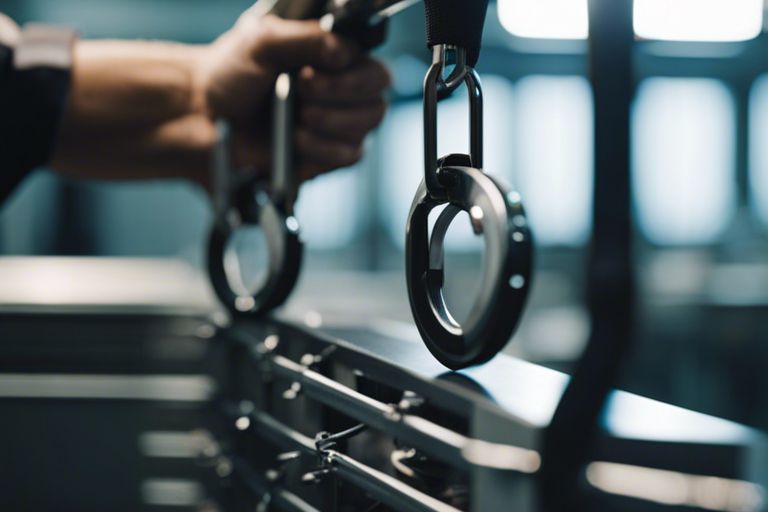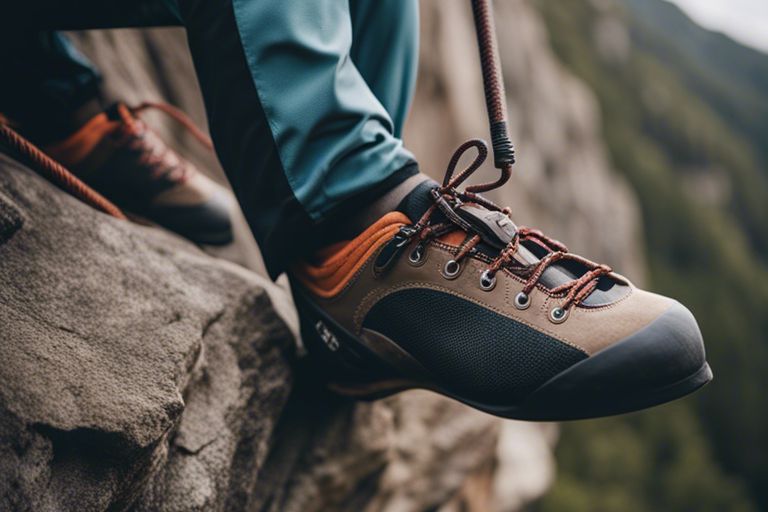Process begins in the workshops, where high-quality materials are meticulously selected to manufacture carabiners, crucial tools for climbing and outdoor activities. You will discover how these intriguing pieces of equipment transition from raw metals to precision-engineered components, undergoing various stages of design, shaping, and finishing. Each phase is paramount to ensuring your safety and reliability while navigating the natural world. Join me as we explore into the fascinating journey of carabiner production, revealing the craftsmanship behind these often-overlooked yet crucial devices.
Key Takeaways:
- Material Selection: Carabiners are typically made from lightweight yet strong materials such as aluminum or titanium, providing durability without adding unnecessary weight.
- Manufacturing Process: The manufacturing of carabiners involves processes like forging, machining, and anodizing to enhance strength and prevent corrosion, ensuring reliability in various conditions.
- Safety Standards: Carabiners must meet strict safety regulations and standards, which are tested through rigorous load and strength tests to ensure they can withstand extreme conditions.
Design and Planning
While many might underestimate the significance of design in the world of carabiners, it is the backbone of their creation. The intricate balance between functionality, safety, and aesthetic appeal begins with a thoughtful design process. Engineers and designers collaborate to craft carabiners that not only meet industry standards but also suit the specific needs of climbers, divers, and outdoor enthusiasts. The aim is to create a versatile tool that can be relied upon in potentially perilous situations while ensuring ease of use and comfort.
Conceptualization of Carabiner Design
An effective carabiner design begins with a deep understanding of its intended use. Are you climbing steep rock faces, or are you harnessing gear for a leisurely backpacking trip? Factors such as load-bearing capacity, shape, and locking mechanisms come into play during this initial phase. Designers sketch multiple prototypes, exploring the visual and functional elements that will eventually guide the production process. Your input as a user can help shape these designs, emphasizing the necessity for practical features that resonate with real-world applications.
Material Selection and Sourcing
Sourcing the right materials for your carabiner is crucial, as it directly impacts its performance and durability. You will find that different types of metals, such as aluminum and steel, are often chosen based on their weight-to-strength ratio, corrosion resistance, and overall longevity. These materials must undergo rigorous testing to ensure they can withstand the demands of rigorous activities while maintaining safety standards.
Understanding the nuances of material selection is important for designing a reliable carabiner. Aluminum, for example, is lightweight and ideal for climbing applications, while steel provides sturdiness for securing heavier loads. The journey of sourcing these materials involves meticulous evaluation and partnerships with trusted suppliers. You must ensure that the selected materials not only meet your performance criteria but also align with sustainable practices, as responsible sourcing has become an integral part of modern manufacturing. Ultimately, the combination of thoughtful design and quality materials lays the groundwork for creating a carabiner that you can trust in any adventure.
Forging and Machining
If you’ve ever marveled at the strength and precision of a carabiner, the process of forging and machining is what brings that marvel to life. This phase of production involves critical steps that transform raw materials into the sturdy body you trust for your climbing adventures or outdoor escapades.
Creating the Carabiner Body
On the manufacturing floor, the process begins with blocks of high-quality aluminum alloy, which are carefully heated until they become malleable. Workers wield forging hammers that shape these heated blocks into the desired form of the carabiner’s body. This initial shaping is vital, as it not only defines the carabiner’s outer profile but also enhances its strength through the alignment of the metal’s grain structure.
On completion of the forging, the carabiner body undergoes a series of inspections to ensure it meets precise specifications. The forged pieces are cooled and then moved on to the machining process, where the symmetry and accurate dimensions necessary for functionality are achieved.
Shaping the Gate and Pin
For the carabiner to operate efficiently, its gate and pin must be carefully shaped to allow for smooth opening and closing while maintaining a secure lock. This involves tightly controlled processes where the material is cut and bent into the desired form. The design of each gate and pin is critical, as they are the components that secure your gear.
For instance, the gate is often manufactured with a slight curvature to facilitate its bending action, allowing it to smoothly open without sacrificing stability. The pin, on the other hand, must fit perfectly within the mechanism to prevent accidental disengagement. Such meticulous design is necessary, ensuring that every piece works harmoniously with the body of the carabiner.
Forging plays an necessary role here, as it allows the manufacturers to reduce the potential for weaknesses in the material. The formation of the gate and pin directly from the same alloy creates a more cohesive structure, optimized for repeated use under load.
Drilling and Tapping Holes
Machining steps in after the shaping is complete, focusing on drilling and tapping precise holes for screws and locking mechanisms. This stage requires sophisticated machinery to produce accurate dimensions that are necessary for the structural integrity of the carabiner. Each hole is drilled with care, ensuring it aligns perfectly with the other components during assembly.
As you can imagine, the accuracy of the holes can affect the overall performance of the carabiner. A small misalignment can cause the gate to not lock properly, potentially compromising safety. Thus, the drilling and tapping process represents the marriage of precision engineering and craftsmanship during carabiner production.
A well-drilled and tapped hole not only allows for seamless assembly but also contributes to the operational efficiency of the carabiner. Each step of machining is vital in crafting a reliable device that meets the rigorous demands of outdoor enthusiasts, climbers, and adventurers alike.
Heat Treatment and Coating
Many advanced processes contribute to the durability and functionality of carabiners, two of which are heat treatment and coating. These processes enhance the physical properties of the metal used in the carabiner, ensuring that it can withstand the stresses of climbing and outdoor activities. By effectively hardening the metal and applying protective coatings, manufacturers can significantly improve the performance and lifespan of these crucial pieces of climbing gear.
Hardening and Tempering the Metal
Metal used in carabiners undergoes a careful hardening and tempering process to increase its strength and resilience. Initially, the metal is heated to a high temperature, near its melting point, which alters its internal structure, making it more malleable and easier to shape. Once this is achieved, the metal is rapidly cooled, often through quenching in water or oil. This rapid cooling hardens the metal, creating a robust composition that is critical for withstanding the extreme forces encountered during use.
However, hardening alone can make the metal excessively brittle. To counteract this, a tempering phase follows where the metal is reheated to a lower temperature for a specified duration. This process relieves some of the internal stresses introduced during hardening, resulting in a balanced metal that offers both strength and flexibility. You may not see these intricacies from the outside, but they play a vital role in the safety and functionality of your carabiner.
Applying Corrosion-Resistant Coatings
With a focus on longevity, the next stage involves applying corrosion-resistant coatings to the carabiner. Given that climbers often use their equipment in challenging weather conditions and environments, these coatings are crucial for protecting the metal from rust and other forms of degradation. Various techniques may be employed, such as anodizing or powder coating, both aiming to create a barrier that repels moisture and other corrosive elements.
Another crucial aspect of applying these coatings is enhancing the carabiner’s visual appeal. While functionality is paramount, having an aesthetically pleasing finish can also contribute to the popularity of a particular design. Moreover, these coatings can provide additional grip and texture to the carabiner’s surface, which is particularly useful when handling the equipment in wet or cold conditions. The combination of aesthetic enhancements and protective qualities ensures that your carabiner remains both visually appealing and highly functional over time.
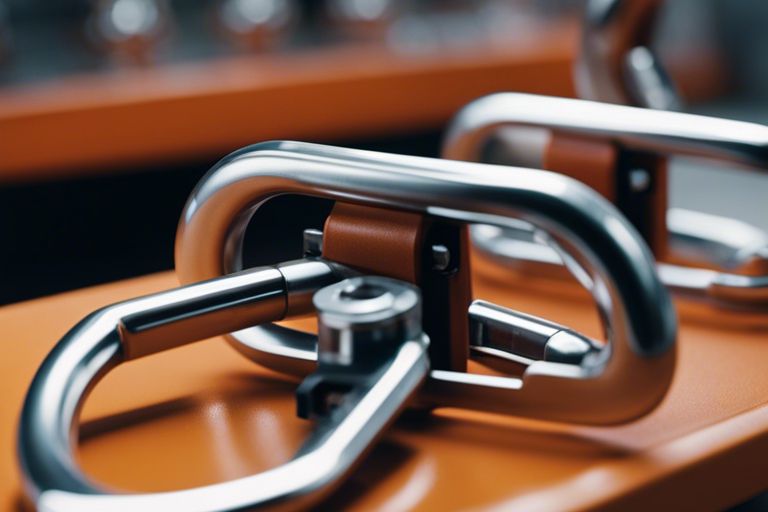
Assembly and Quality Control
After the manufacturing process, the true artistry of the carabiner comes to life during the assembly and quality control stages. This is where each component finds its purpose, ensuring that the finished product will withstand the rigors of climbing. You will witness the crucial moment when the gate and pin are meticulously attached, a task that requires precision and care to guarantee the safety and functionality of the carabiner.
Attaching the Gate and Pin
Assembly of the carabiner begins with the experienced hands of skilled technicians who carefully align the gate and pin mechanisms. These components are integral to the carabiner’s function, allowing for the secure closure that climbers rely on during ascents. You will notice that during this process, a careful balance is maintained, ensuring that when the gate is pressed, it opens smoothly and returns to its closed position reliably.
Once the gate and pin are attached, technicians perform a series of tests to confirm that the components move freely yet securely. The gate must not only open easily but also seal tightly, providing the necessary safety that climbers trust. You may find this moment intriguing, as the perfect harmony of design and function unfolds in front of your eyes.
Inspecting for Defects and Functionality
Any quality control process is incomplete without a rigorous inspection for defects and overall functionality. Each carabiner undergoes a thorough examination to ensure there are no visible blemishes or structural weaknesses. You will observe inspectors checking for smooth edges, proper alignment, and the integrity of the metalwork. This is a critical stage where meticulous attention to detail guarantees that every carabiner meets stringent safety standards.
Gate functionality is paramount during this inspection phase. You will see inspectors employing tests to simulate real-world usage, evaluating whether the gate opens and closes under various stresses. Such assessments provide invaluable insight into the durability of the carabiner, safeguarding climbers and ensuring performance consistency during their climbs. This process not only enhances the product’s reliability but also reinforces the commitment to excellence that defines top-tier carabiner manufacturing.
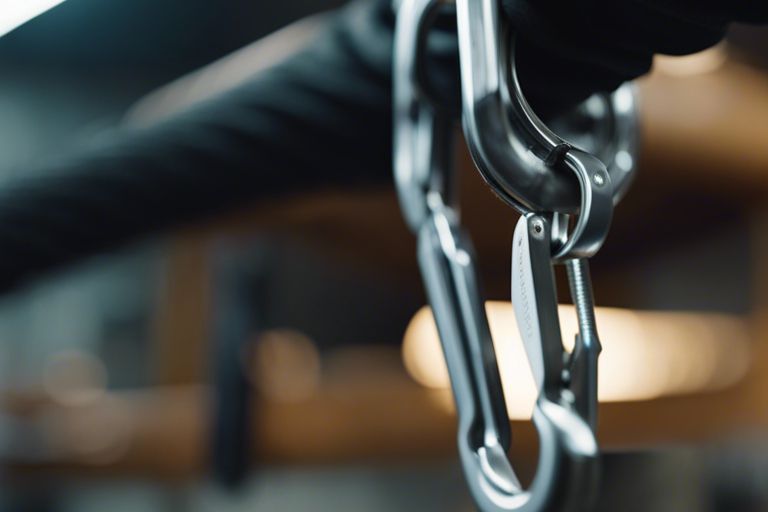
Testing and Certification
Once again, the journey of your carabiner doesn’t end after production; it enters a critical phase known as testing and certification. This is the moment when the carabiner’s strength, durability, and safety are put to the ultimate test. Manufacturers conduct a series of rigorous evaluations to ensure that each carabiner can withstand the demands of adventurers, climbers, and everyday users alike. Without these tests, it would be impossible to guarantee that the gear you trust with your life holds up under pressure.
Load Testing and Performance Evaluation
Load testing is one of the primary methods used to assess the strength of a carabiner. Here, weights are applied to the carabiner to simulate the forces it would encounter during actual use. You may find it fascinating to know that each carabiner must be able to handle several times its rated load limit, ensuring safety even in extreme conditions. Performance evaluation also includes inspecting the locking mechanisms and materials for fatigue or wear, solidifying your confidence in their longevity.
Meeting Industry Standards and Regulations
To further ensure your carabiner’s reliability, it must comply with industry standards and regulations set forth by organizations such as the American National Standards Institute (ANSI) and the European Committee for Standardization (CEN). These standards establish minimum strength requirements and performance criteria, which every carabiner must meet before it can be labeled as safe for use. Your peace of mind is enhanced by these stringent checks, as they signify that your equipment has undergone comprehensive scrutiny.
For instance, carabiners that meet the standards may undergo additional certifications, such as the UIAA (International Climbing and Mountaineering Federation) testing, which assesses safety and usability in climbing environments. By adhering to these evolving regulations, manufacturers ensure that your gear is not only safe but also tailored to the specific needs of various activities. This meticulous process of testing and certification is vital to upholding the high safety standards you expect from your climbing equipment.
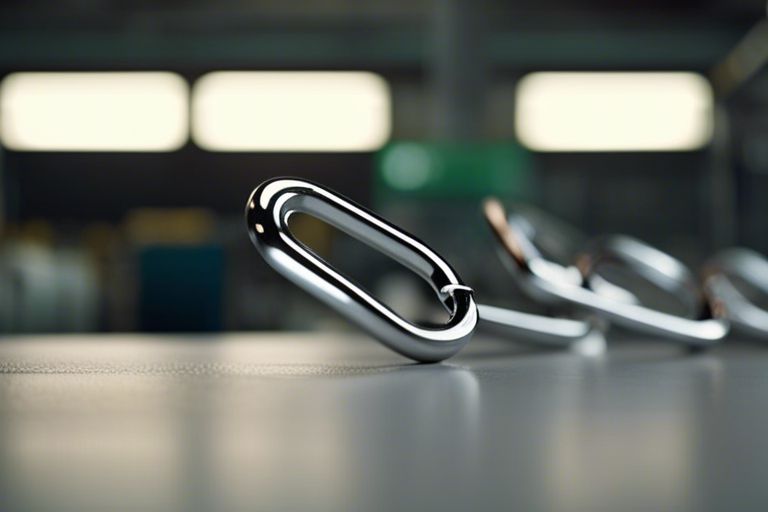
Finishing and Packaging
Your journey through the creation of carabiners comes to a vital phase: the finishing and packaging process. This is where each piece is refined and prepared for its ultimate purpose—safely securing climbers, hikers, and adventurers around the globe. The finishing touches not only enhance the aesthetics of the carabiner but also ensure that they meet the stringent safety standards required for such vital equipment.
Applying Labels and Markings
Any reputable manufacturer understands the importance of proper labeling on a carabiner. This phase involves the application of various markings that indicate strength ratings, compliance with safety regulations, and even branding. Labels not only convey crucial information to the user but also serve as a testament to the quality and integrity of the product. These markings are often etched or stamped into the metal to ensure they withstand the test of time and use.
Any indicators of wear or damage can compromise the safety of a carabiner. Consequently, special care is taken to ensure that labels are both durable and visible, allowing you to feel secure in your equipment’s reliability. As you reach for your carabiner, those meticulously placed markings become a reassurance of the craftsmanship that has gone into their making.
Preparing for Distribution and Sale
The next critical step in the carabiner production process is preparing your beloved pieces for distribution and sale. The manufacturers carefully package the carabiners in protective materials that safeguard against damage during shipping. Each package is designed to attract the attention of potential buyers while maintaining simplicity and practicality. They are often organized in bulk for wholesale, but individual packaging is also carefully thought out to ensure an exceptional user experience.
Preparing these carabiners for distribution involves several aspects, including quality checks to confirm that they meet the established safety standards. Once packed, these exciting implements of adventure are then ready to initiate on their journey to stores and online platforms, where you can eventually find the perfect one for your next outdoor escapade. The transition from factory floor to retail shelf is a significant milestone, as each carabiner carries within it the dedication and expertise of the artisans who crafted it.
Summing up
The journey of how carabiners are made is a fascinating blend of science, craftsmanship, and innovation. As you explore this intricate process, from the meticulous selection of materials and the precision of manufacturing techniques to the rigorous testing for safety, you gain a deeper appreciation for this unassuming yet vital equipment in climbing and adventure sports. Understanding the quality assurance measures that ensure their strength and reliability can enhance your confidence the next time you launch on an outdoor expedition, knowing it is these very principles that allow you to trust your gear.
Ultimately, the making of carabiners exemplifies the balance between functionality and engineering excellence. You learn that every curve, hinge, and locking mechanism is thoughtfully designed to withstand the rigors of nature while providing you with the safety and reliability necessary for your adventures. So, as you clip your carabiner onto a harness or gear loop, remember the intricate journey it has taken—from raw material to a finely crafted tool that’s ready to support you in your exploration of the great outdoors.
FAQ
Q: What materials are commonly used in the manufacturing of carabiners?
A: Carabiners are typically made from materials such as aluminum and steel. Aluminum carabiners are lightweight and corrosion-resistant, making them ideal for climbing and recreational uses. They are often anodized to increase durability. Steel carabiners, on the other hand, are much stronger and are used in heavy-duty applications such as industrial climbing and rescue operations. The choice of material impacts the carabiner’s strength, weight, and overall performance.
Q: What is the process involved in making a carabiner?
A: The process of manufacturing a carabiner generally involves several key steps. First, raw materials like aluminum or steel are sourced. For aluminum carabiners, the metal is usually extruded into the desired shape. Next, the carabiner is machined to refine the shape and ensure it meets specified dimensions. Following that, heat treatment is applied to enhance strength and durability. Once the basic structure is complete, the carabiner is anodized (for aluminum) or coated (for steel) to prevent corrosion. Finally, quality control checks are performed to ensure that each carabiner meets safety standards before it is packaged and shipped to customers.
Q: How is the strength of a carabiner tested and ensured?
A: The strength of a carabiner is typically tested through various rigorous testing methods. Manufacturers conduct tensile strength tests where the carabiner is subjected to forces that simulate actual use, ensuring it can withstand specified loads. These tests often involve pulling the carabiner until it fails to determine its maximum load capacity. Additionally, carabiners are tested for resistance against dynamic forces, such as those experienced during a fall. The results are compared against industry standards set by organizations such as the UIAA (International Climbing and Mountaineering Federation) or the ASTM (American Society for Testing and Materials) to ensure that they are safe for use in climbing and other critical applications.

